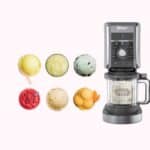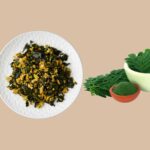A fresh garden salad made with crisp greens, vegetables, and vinaigrette is a nutritious low calorie choice. But start adding proteins, cheese, nuts and creamy dressings and the calories can climb. In this article, we’ll break down how many calories in a garden salad based on its components. You’ll learn salad building strategies to maximize nutrition and flavor without going overboard on calories.
What is a Garden Salad?
A garden salad starts with a base of mixed salad greens like romaine, spinach, arugula or spring mix. Chopped vegetables commonly include tomatoes, cucumbers, carrots, bell peppers, mushrooms, and red onion. Some garden salads also incorporate a lean protein like grilled chicken or chickpeas. The vegetables and greens are tossed in a vinaigrette or light olive oil dressing. Toppings like cheese, croutons, seeds or nuts are optional. With its focus on fresh veggies, a garden salad is a nutritious low calorie choice.
Understanding Calories in a Garden Salad
The foundation of lettuce and salad greens contributes minimal calories to your garden salad. One cup of chopped romaine or spinach has 10-20 calories. Greens like kale, arugula, chicory, radicchio, and microgreens also provide very few calories per serving. Load up on these antioxidant-rich greens to add bulk and nutrition without adding too many calories. Fill most of your plate with lettuce or a spring mix for a low calorie base.
Counting Calories in Salad Vegetables
One cup of chopped raw vegetables like tomatoes, cucumbers, bell peppers, mushrooms, carrots, radishes, and red onions all have 30 calories or less. These water-rich veggies bulk up your salad with fiber, vitamins, and minerals for very few calories. Cucumbers, zucchini, broccoli, cauliflower, and celery are some of your lowest calorie options. Go easy on higher calorie veggies like corn, peas, beets, or potatoes.
Related: Is Kale Better Than Lettuce
Calculating Calories in Popular Protein Additions
For extra protein, occasional garden salad additions may include grilled chicken, chickpeas, hard boiled eggs, cottage cheese, tuna, salmon, or tofu. A 3-4 oz serving of chicken, salmon, tuna or 1⁄4 cup chickpeas adds 100-200 calories. One large hard boiled egg has about 80 calories. These proteins make your salad more filling, so balance with extra low calorie greens and veggies.
Watching Calories in Seeds and Nuts
Nuts and seeds like slivered almonds, walnuts, pecans, and sunflower seeds are often added to garden salads. Just 2 tbsp provides 170-200 calories, so use a light hand. Pumpkin, sesame, poppy and flax seeds have about 50 calories per tablespoon. Look for nuts and seeds toasted with no oil or salt added. Or use sparingly to keep salad calories down.
Related: Lettuce VS Spinach
Hidden Calories in Dressings and Extras
Avoid pouring on high fat dressings like ranch, Caesar, blue cheese, and some balsamic vinaigrettes, which have 150-300 calories per 2-4 tablespoon serving. Lighter olive oil and vinegar-based dressings have around 50-75 calories with no added cream or cheese. Similarly, a small handful of croutons or tortilla strips can add 150+ calories. Go easy on crumbled cheese, bacon bits, fried onion strings and other higher calorie toppings.
Best Practices for Building Salads
Keep your salad light and nutrition-packed with these tips:
– Fill at least half your plate with low calorie greens and chopped veggies
– Stick to 3-4 oz lean protein portions like grilled chicken or salmon
– Use just 1-2 tbsp of nuts or seeds, not a full 1⁄4 cup
– Drizzle salads with 2 tbsp or less of dressing
– Avoid extras like croutons, tortilla strips, cheese, bacon
Portion Size Matters for Calorie Total
A good target portion for a main dish salad is about 2 heaping cups of greens and vegetables combined, plus 4 oz protein. This, along with 2 tbsp dressing totals around 300 calories for a light meal-sized salad. Avoid huge restaurant-sized portions piled high with add-ins that can run 600+ calories.
Related: How many calories are in spring mix
How to Estimate Calories in a Garden Salad
Get an accurate calorie count by weighing salad ingredients and looking up nutrition info. Factor around 25 calories for 2 cups mixed greens, 25 calories for 1 cup chopped veggies, 100 calories for 3 oz grilled chicken and 45 calories for 2 tbsp dressing. This keeps your total around 200 calories before extras. Overdoing portions of protein, nuts, dressing and add-ins packs on more calories.
Big Variables Impacting Salad Calories
The choice of dressing and the number and size of calorie-dense add-ins have the biggest effect on total salad calories. For example, a garden salad with light balsamic vinaigrette, 4 oz chicken, and tons of veggies is around 300 calories. But swap in heavy ranch dressing, extra nuts and seeds, cheese, croutons and fried onions instead and it could exceed 600-700 calories.
Tips for Reducing Garden Salad Calories
Build a satisfying garden salad within a healthy calorie range with these tips:
– Opt for vinaigrette, lemon juice, or oil-based dressings. Use 2 tbsp or less.
– Skip croutons, tortilla strips, bacon, cheese, fried onions to trim calories
– Choose only 1 protein like grilled chicken or chickpeas in modest portions
– Use just 1-2 tablespoons of nuts or seeds instead of 1/4 cup
– Load up the salad with lower calorie vegetables like cucumbers, peppers, tomatoes etc.
Related: How many calories are in a chef salad?
Satisfying Low Calorie Salad Combinations
Some delicious and nutritious low calorie garden salad ideas include:
– Greek salad with romaine, tomatoes, cucumbers, bell peppers, onion, chicken, feta, balsamic vinaigrette
– Southwest salad with spinach, chicken, black beans, corn, salsa, avocado, cilantro lime dressing
– Garden salad with mixed greens, carrots, mushrooms, sunflower seeds, lemon vinaigrette
Making Salad Part of a Weight Loss Diet
An approximately 300 calorie garden salad makes a great lunch or light dinner, especially when accompanied by whole grain toast or bread. Salads are also perfect low calorie starters if having a higher calorie main dish. Just control portions of proteins and dressings and focus on the vegetables for a diet-friendly way to enjoy salad.
A Word From Blogzah
A plain garden salad centered on greens and vegetables provides around 100 calories. Factoring in 2-4 oz of protein, moderate amounts of nuts or seeds, and 2 tbsp dressing takes the total to 150-300 calories. Pay attention to ingredients to avoid garden salads that exceed 500+ calories. With thoughtful construction, garden salads are a slimming and nutritious choice.
















